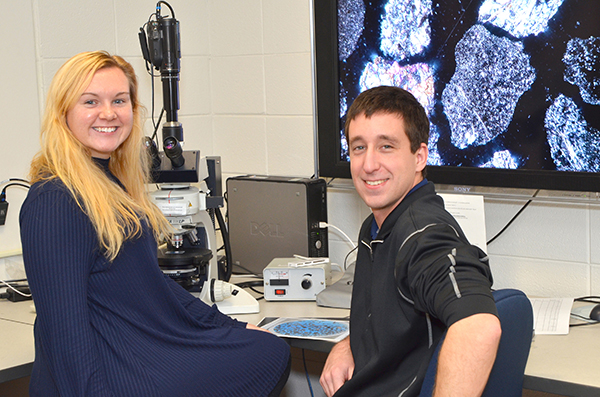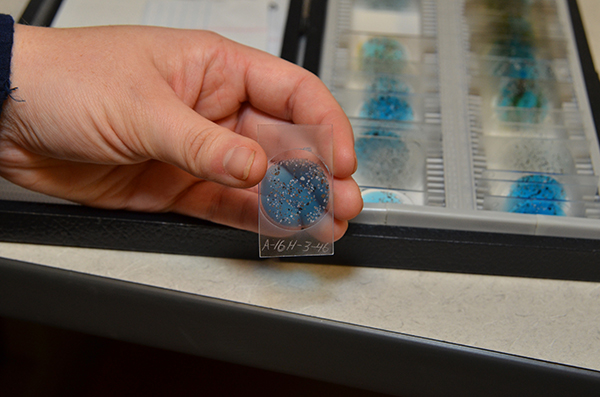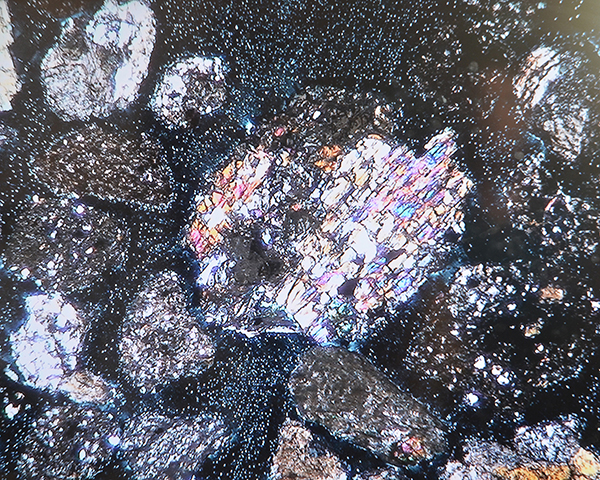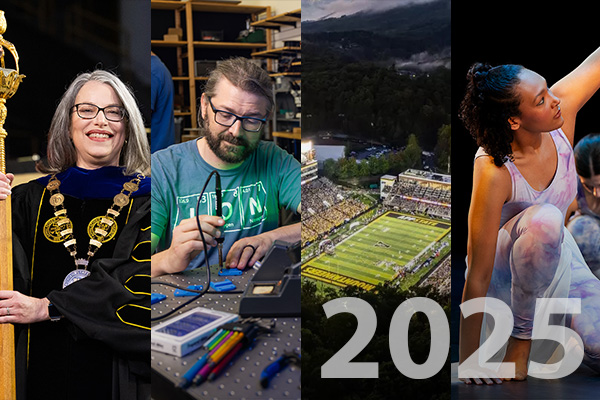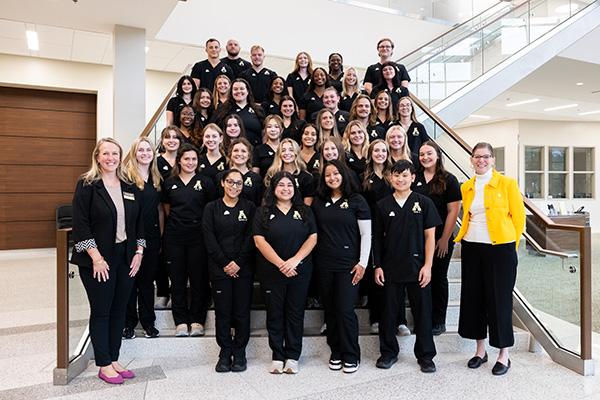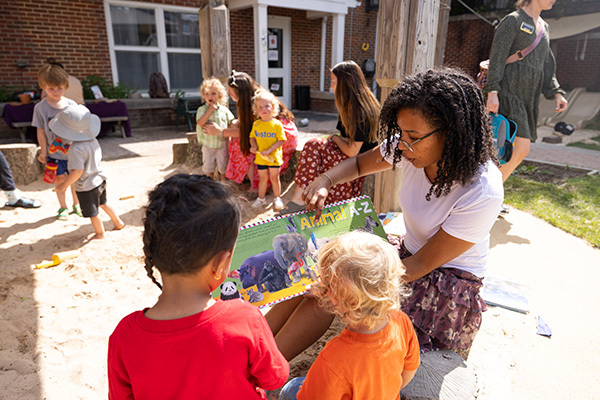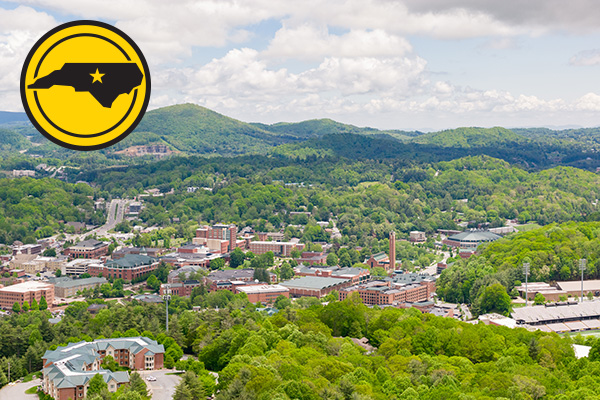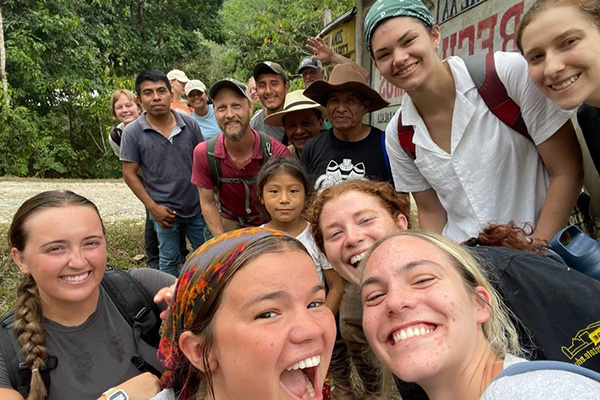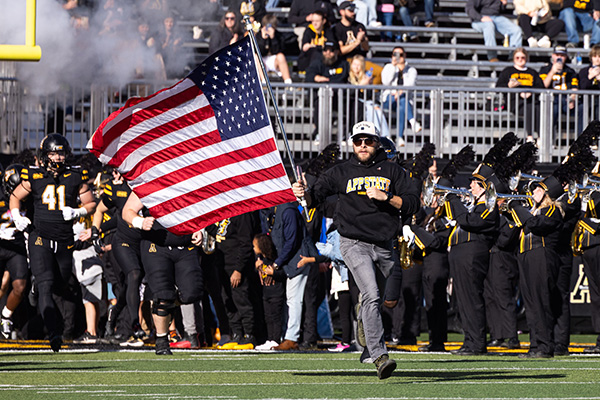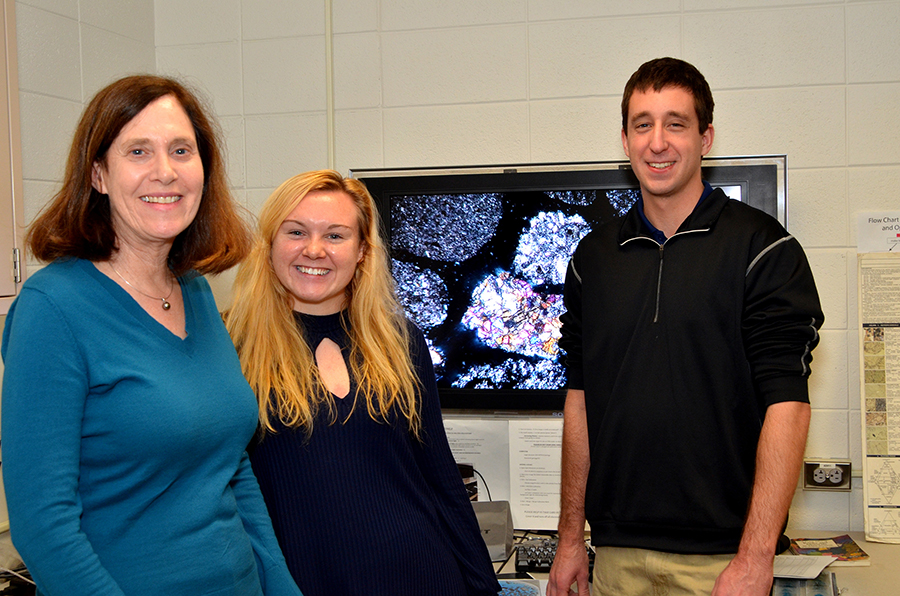
Geology professor Ellen Cowan, left, was part of an international team of scientists studying climate change in the Gulf of Alaska. Student research assistants Gina Carney, center, and Mathew Sandefur helped analyze thousands of sand grains retrieved from ocean drilling that were deposited by glaciers millions of years ago.
BOONE—Show most people a core sample from the ocean floor and they only see mud. Ellen Cowan sees a ribbon of time dating back 1 million years or more.
Since 2013, Cowan, a geology professor at Appalachian State University, has been part of an international team of scientists studying climate change and earth systems in the Gulf of Alaska. Their work with the Integrated Ocean Drilling Program is supported in part by the National Science Foundation.
By studying tiny grains of sand found within the core samples, Cowan is adding to the body of knowledge related to the history of the glaciers that formed nearly three million years ago on the 18,000-foot high St. Elias Mountains and then scoured the landscape as they retreated to the ocean.
The research documenting the glaciers’ history and interconnectivity to mountain formation and climate has been published in the Proceedings of the National Academy of Sciences of the United States of America.
As mountains form, they change the climate bringing the possibility of precipitation falling as snow and building up glaciers. When the climate warms and the glaciers erode, they transport large amounts of rock on their path to the ocean, which dramatically alters the landscape. By studying the materials deposited on the ocean floor, the scientists determined that the glaciers have eroded the mountains faster than the geological uplift, or tectonic forces, could rebuild them. That interaction continues to this day.
“The history of the glaciers in Alaska wasn’t well known before,” Cowan said of her and others’ ongoing research. “What has changed from previous research is our understanding of the timing of everything. Looking at the deep sea showed that the influence of the glaciers on land has really changed the landscape on the continent and resulted in a high loss of mass over a short period of time. From a geologic point of view this all happened quickly, within the last million years,” she said.
“Glaciers are so effective at eroding the landscape that they don’t leave a trace of what happened,” Cowan said. “All you can see from the landscape is the last thing that happened. The history of what happened is out in the ocean, because the glaciers scoured everything out into the sea. That’s where the long-term records are located. That’s why ocean drilling is so important.”
The research vessel, the JOIDES Resolution, collected samples from as deep as a kilometer below the ocean floor.
Using the university’s scanning electron microscope, Cowan and her student research assistants, undergraduate geology majors Mathew Sandefur and Gina Carney, have so far analyzed more than 1,000 samples of sand grains extracted from the mud in the core samples looking for differences in size and roughness and composition. By studying the shape of the sand, they can determine how they got to the ocean floor. “The sand in the core samples is too large to have gotten to the sea floor by any other process we can imagine, so it must have come on ice,” she explained.
Based on the amount of debris recovered from the ocean floor, the scientists estimate that glaciation in Alaska expanded to large-scale ice streams between 1.2 and 0.8 million years ago when the climate in the region allowed the glaciers to change, Cowan explained. “The glaciers got bigger and more effective at eroding. And we can document that. It’s interesting that it all comes down to a grain of sand,” she said.
About Appalachian State University
As a premier public institution, Appalachian State University prepares students to lead purposeful lives. App State is one of 17 campuses in the University of North Carolina System, with a national reputation for innovative teaching and opening access to a high-quality, cost-effective education. The university enrolls more than 21,000 students, has a low student-to-faculty ratio and offers more than 150 undergraduate and 80 graduate majors at its Boone and Hickory campuses and through App State Online. Learn more at https://www.appstate.edu.
What do you think?
Share your feedback on this story.
